Shakespeare’s Italy
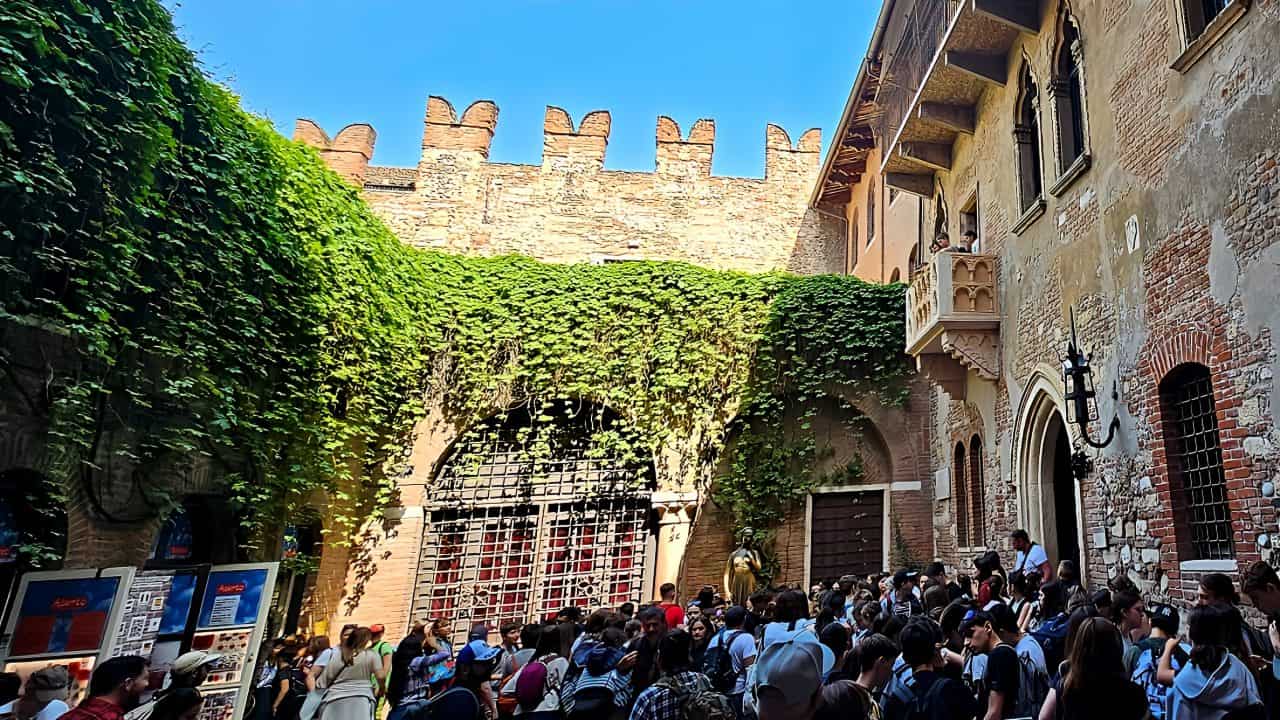
Mike and I have spent the last week in Shakespeare country and no we weren’t in Britain. We camped between the Italian cities of Verona and Padua. For those that know their Shakespeare, you will recognize Verona as the setting for Romeo and Juliet and Padua as the setting for Taming of the Shrew. In actual fact, Shakespeare is believed to have never left England and was never anywhere near Italy. He also didn’t “invent” Romeo and Juliet. An Italian novella titled The Tragical History of Romeus and Juliet was written by Matteo Bandello in 1554 and translated into English in 1562. Shakespeare did write the play based on this story and other readings about this part of Italy.
Verona plays up its Romeo and Juliet history. You can visit Juliet’s house, even if she probably didn’t exist. The picture above shows Juliet’s house and more specifically, Juliet’s balcony on the right-hand side. On the ground in the centre of the picture is a statue of Juliet. For some unknown reason, it is supposed to bring good luck if you rub your hand over her bare breast. I find this a little strange as Juliet really wasn’t known for her good luck. It was amusing watching young boys giggle as they rubbed her and women doing it very quickly. Do you see the crowds in the picture? It was too hot and unbelievably busy for a Thursday afternoon in April.
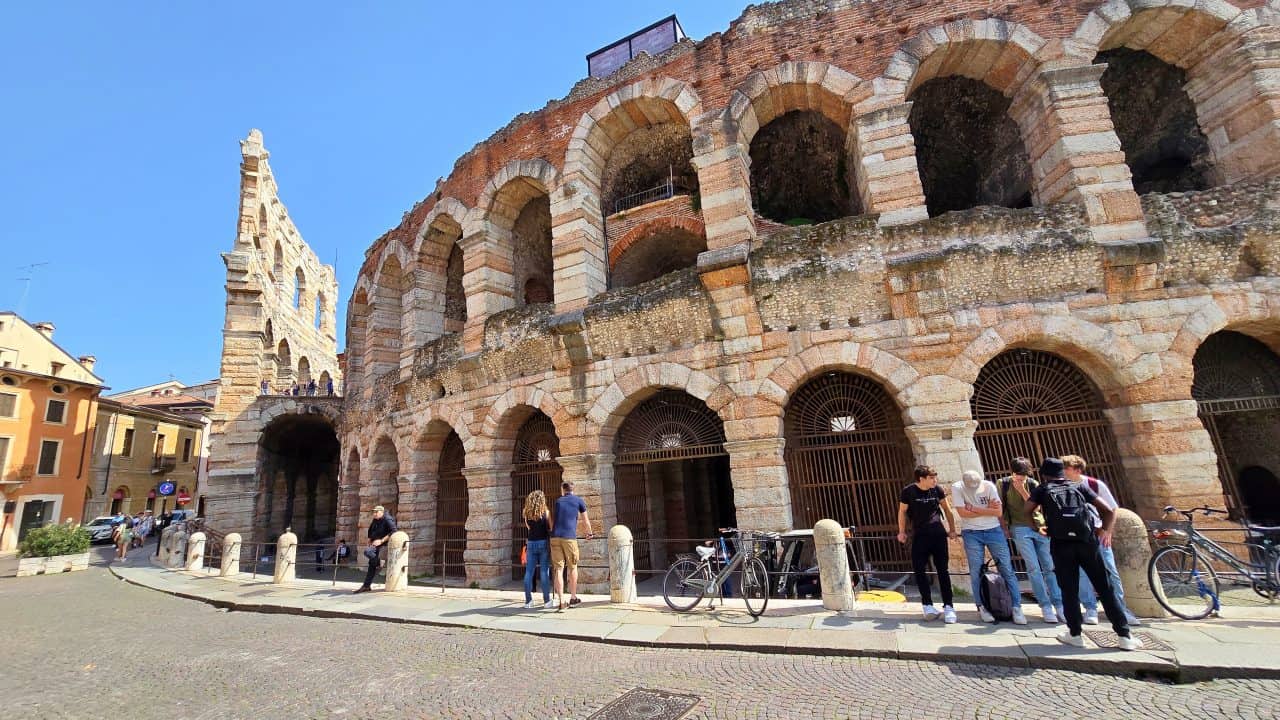
The Arena di Verona is a Roman amphitheatre in the centre of city. It is the third largest in Italy but it is the best preserved one. It was built in 30 AD and used to seat 30,000. Today it is major venue for opera performances, concerts, and other large-scale events during the summer season and now seats 15,000. For some reason the elliptical shape helps the amphitheatre have excellent acoustics from any point in the seating area. There was an outer ring that sustained major damage in an earthquake in 1117.
The world-famous Arena di Verona Opera Festival was officially launched here in 1913. It is hard to find a world opera star who has not performed at this festival. The debut of Maria Callas on the Italian stage took place at the Arena di Verona, where other stars who have appeared include Luciano Pavarotti, Plácido Domingo, Giuseppe di Stefano, Renata Tibaldi and many others. (I got this information from our tour as I have to admit that I don’t know all the opera star’s names).
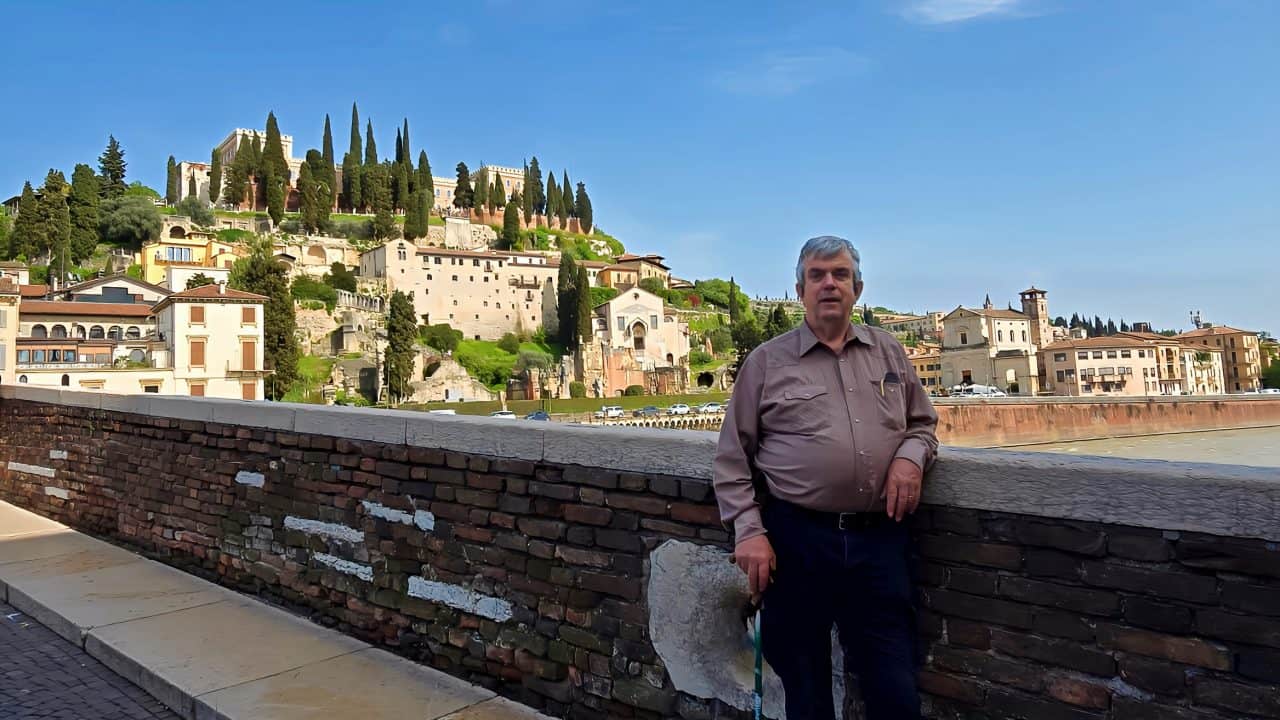
Mike is on a bridge in Verona and across the water you can see the remains of the Roman Theatre. If you look closely you can see the ruins of the theatre, built in the 1st century BC, going up the hill on the left. We didn’t actually get over to the ruins. We intended to come back a second day and visited Verona’s four main cathedrals and churches and these ruins but never made it. Today, the Verona Roman Theatre is an open-air venue that comes alive during the summer with various cultural events, including performances of Shakespeare’s plays, concerts, and operas. From looking at this photo, it is hard to believe that any events would be held here.
Shown at the bottom of this post is Piazza Bra and the interesting Fountain of the Alps. It was a gift from the Bavarian City of Munich in 1975. In return Verona sent Munich a copy of the Juliet statue, both symbolizing the twinning of the two cities.
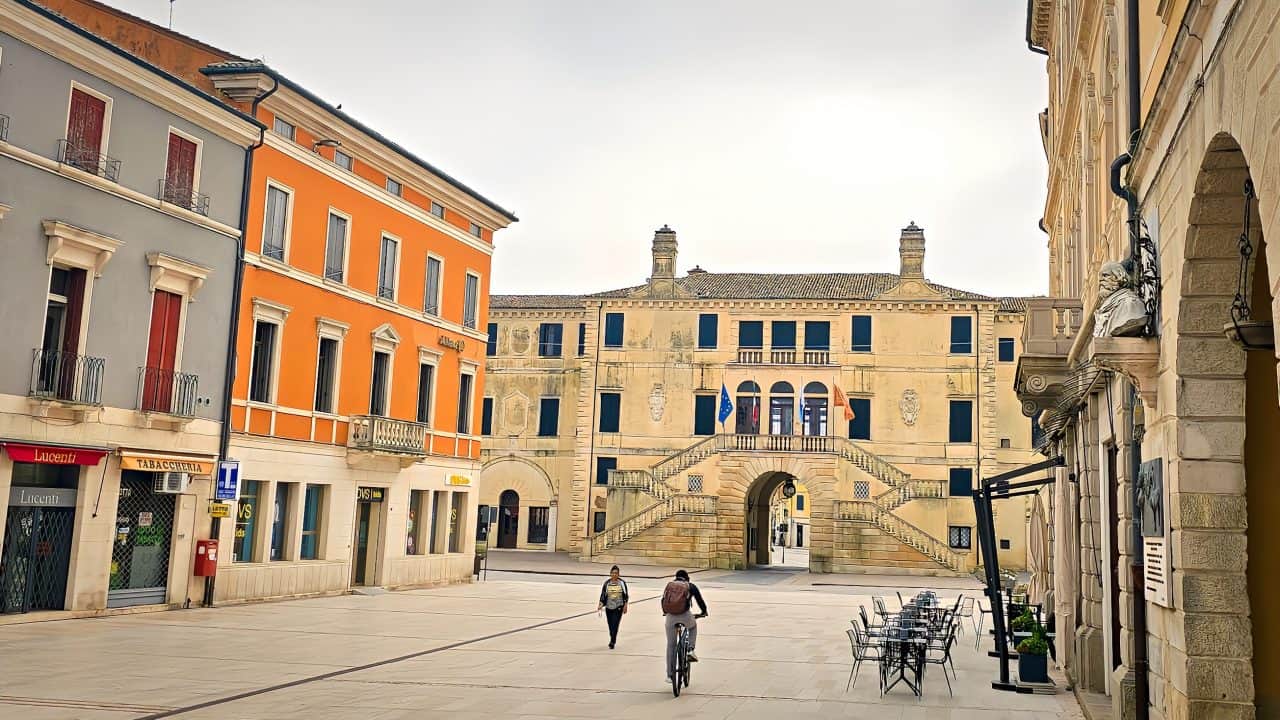
We didn’t do a lot of cycling this week but we did some. It was interesting in the town of Lonigo to simply cycle under the archway through the palace. We also cycled to Vicenza where we saw this statue that I really liked. It is supposedly dedicated to the unknown soldier but it is very different. It seems to depict non-fighting scenes. It shows a messenger on his motorcycle, which is something Mike’s father did during the war. It shows an injured soldier being carried off the battlefield by medics and soldiers consoling a small child. We took the train to Vicenza, walked and cycled around the city and then rode the 30 km back to our camper. The train ride cost each of us only 3€ ($4.40 Cdn) and that included our bikes. Unfortunately, the train station in Montebello doesn’t have an elevator so we did have to carry our e-bikes up several flights of stairs in order to access the train platform. Never-the-less, we love Europe’s trains. They have many, many trains with lots of stops, compared to North America and their regional trains are quite inexpensive.
Mike and I walked past the outside of the Santa Corona Church in Vicenza which was built in the 1260s. It was created to house a single thorn that is supposed to be from Jesus’s Crown of Thorns. This thorn was donated to the Bishop of Vicenza by King Louis IX of France. Although some of us wonder about the authenticity of such items, there is no denying that it has significant religious and historical meaning to both the city and the church.
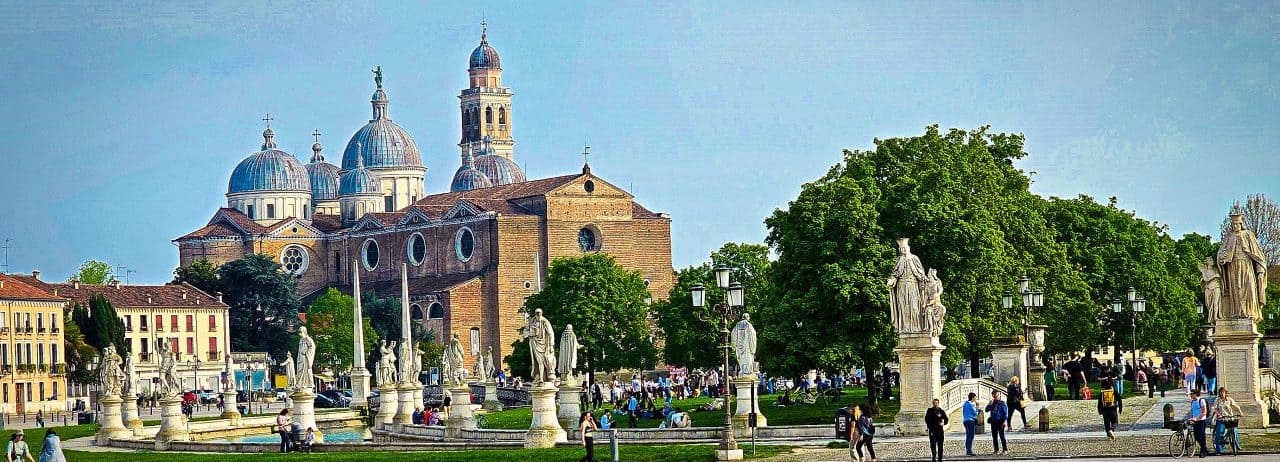
The other main city that we visited this week was Padua, of Taming of the Shrew fame. It doesn’t play up its Shakespeare relationship like Verona does. Padua has the second largest square in Europe called Prato della Valle shown above. It looks much more like a large lovely park in the centre of the city than what I think of as a square. It is elliptical in shape and surrounded by a canal with very large statues lining both sides of the canal with a fountain in the centre.
Near the square was this grassy area with nylon bands strung everywhere. People were practicing “slacklining” which is done on a rope that isn’t under tension, as opposed to tightrope walking which is much easier (everything is relative 😊 ). We also saw some people practicing juggling here. It was quite interesting to watch.
UNESCO has made the Botanical Garden of Padua, created in 1545, a World Heritage site. It is said to be the original of all botanical gardens throughout the world. I guess I don’t fully understand the term botanical because I am quite sure that the Chinese had phenomenal gardens and ties between science and nature centuries before 1545.
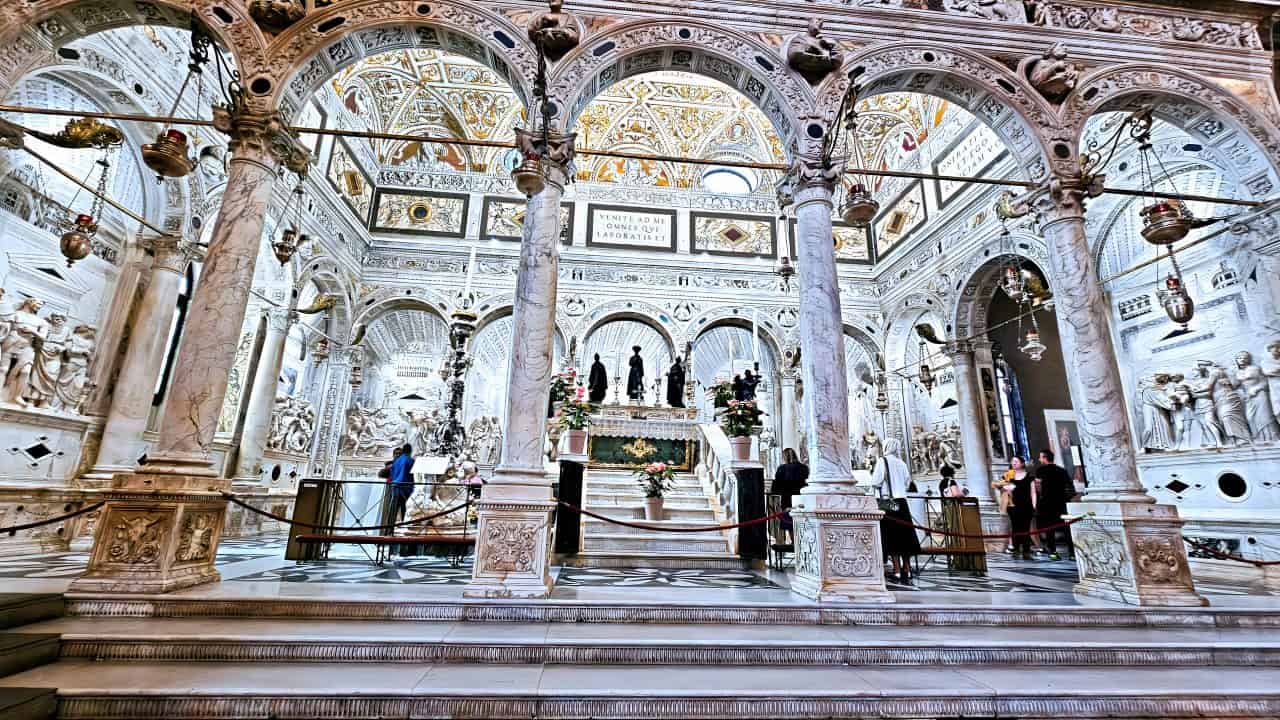
The Basilica of Saint Anthony can be seen in the photo above of the Prato della Valle square. I remember specifically noting that one of the churches in Verona had at least 15 chapels along the side, each one with phenomenal paintings and sculptures. I am afraid to admit, that these interiors do blend together so whether it was Saint Anthony’s or not I am not positive anymore. I do know that there was an outstanding area within the Basilica of Saint Anthony that contained his tomb. Apparently, when he died there was a big uprising with people wanting him to be recognized as a saint. He was canonized within less than a year from his death. This was phenomenally fast. He is known both as Saint Anthony of Padua and Saint Anthony of Lisbon. I have some family members that should build a shrine to Saint Anthony because he is known as the patron saint for lost items!
Previously I said that after this stop we would be heading into the mountains, well that has changed again. Mike and I are now on are way to Italy’s largest lake, Lake Garda. We will be staying at the south end of the lake. It is only 45 minutes from our current camping spot. We expect to stay at the lake for one or two weeks before we head north.
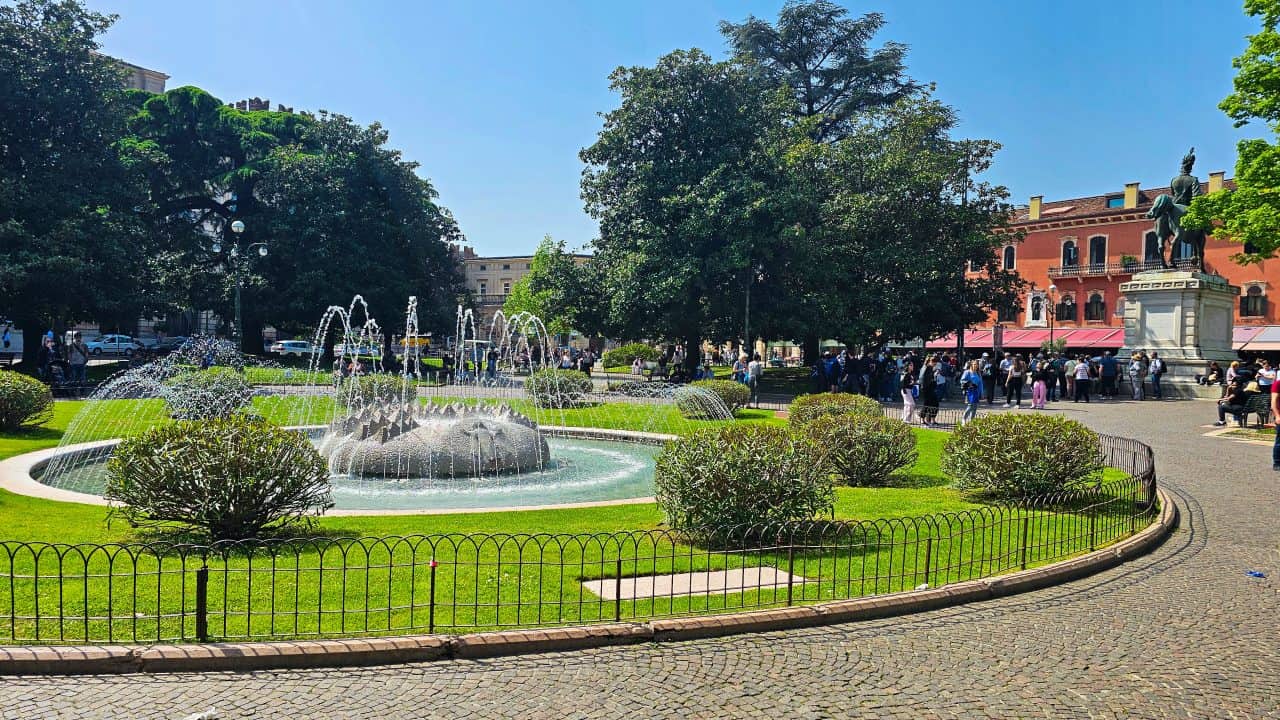

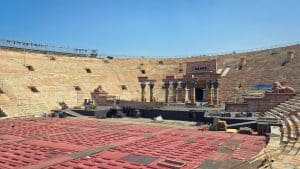
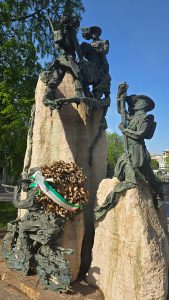
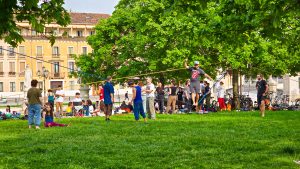
Leave a Reply